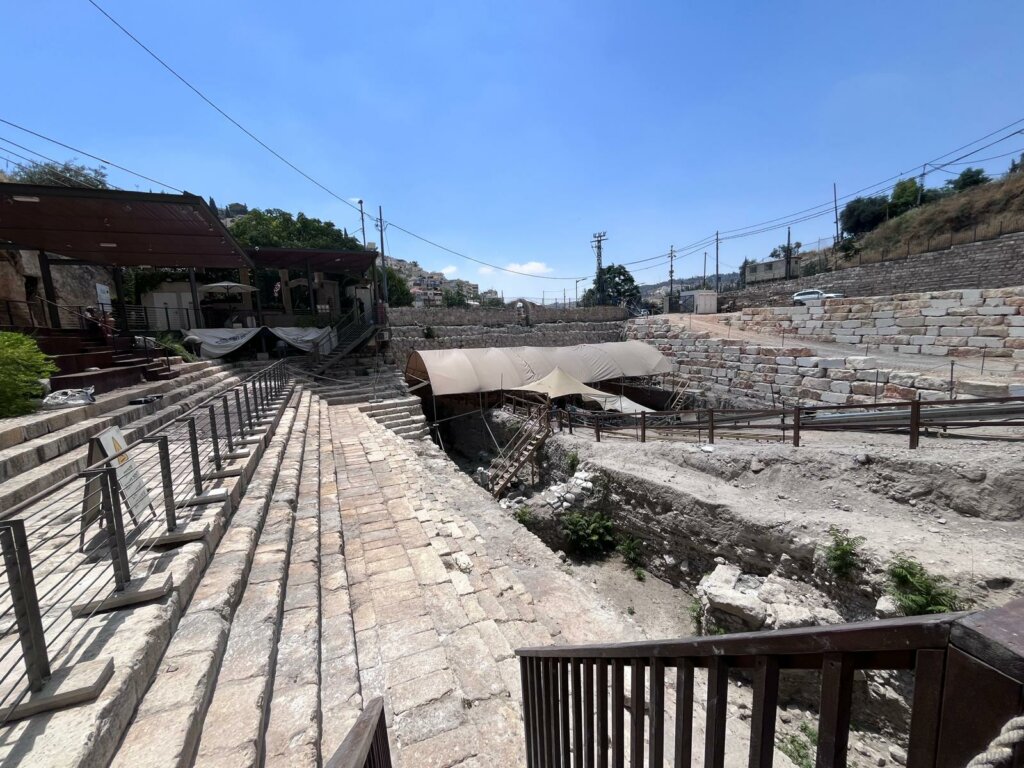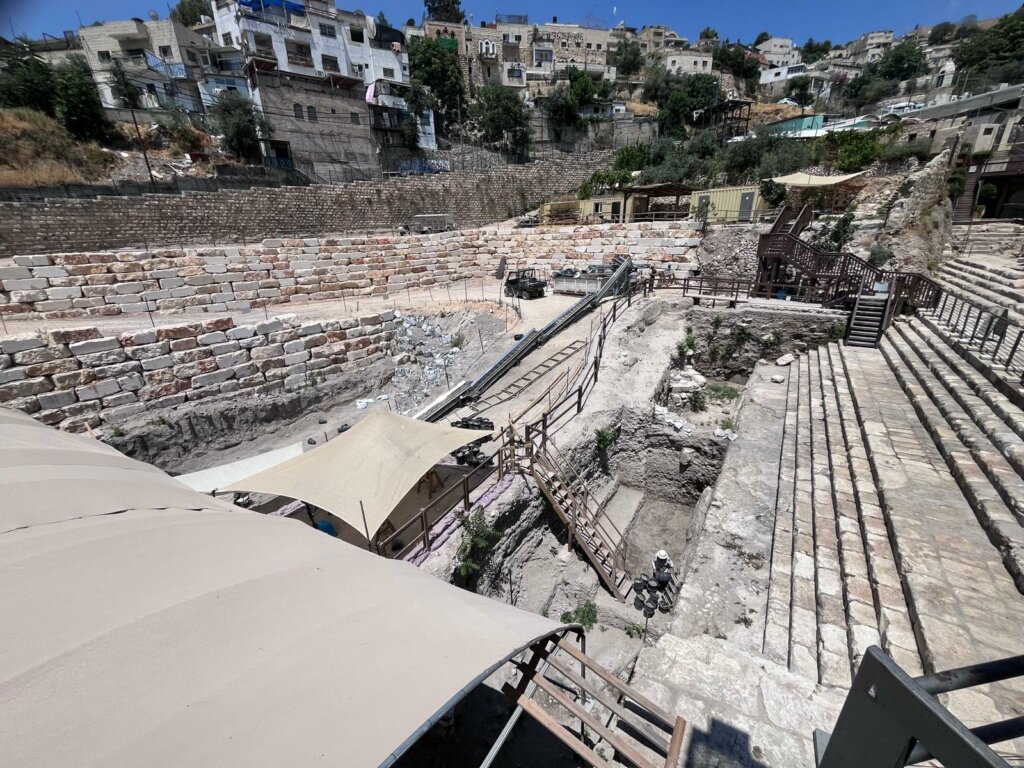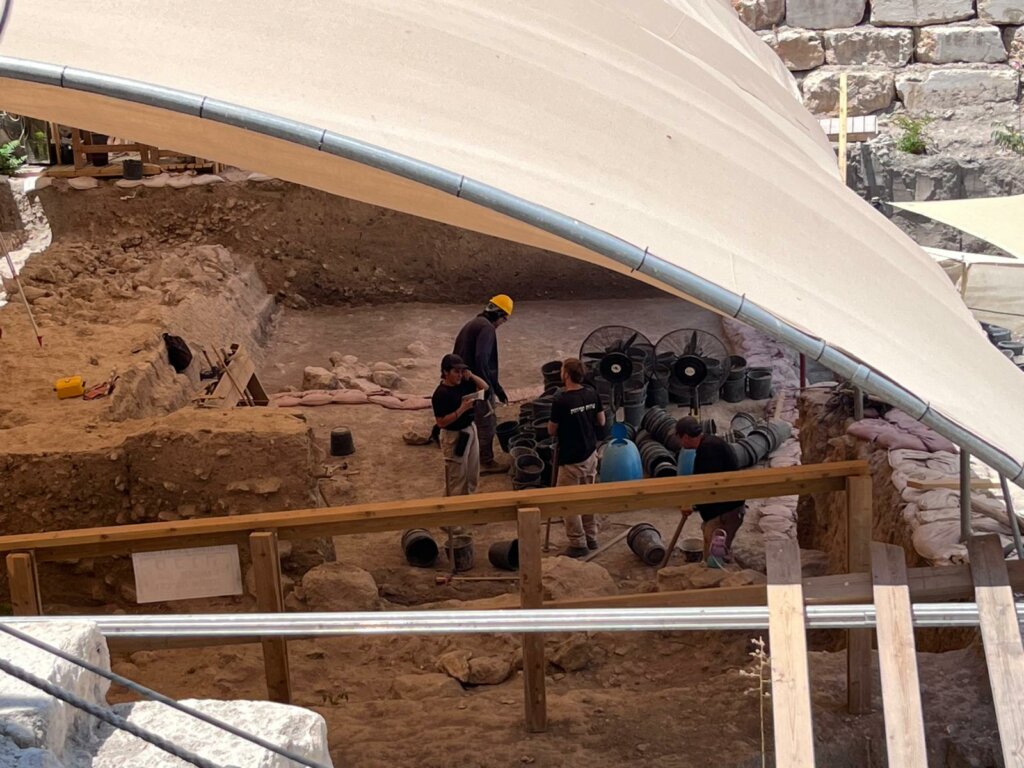A new study of textiles found in the Judean wilderness reveals that the color scarlet was made using powder of a scale insect.
“A nearly 2,000-year-old ring engraved with the image of Minerva, the Roman goddess of wisdom and battle — known to the Greeks as Athena — was found on Mount Carmel.”
An 8th century seal discovered at Hazor “depicts a battle between an unknown figure accompanied by Greek and Egyptian mythical creatures, and a large seven-headed serpent, commonly believed to be an illustration of the Lernaean Hydra from the Greek myth of Hercules’s 12 labors.”
The “altar” on Mount Ebal was recently damaged.
“The Saint Hilarion complex, one of the oldest monasteries in the Middle East, has been put on the UNESCO list of World Heritage sites in danger due to the war in Gaza.”
The final excavation season at Tel Burna (Libnah?) has concluded. Co-director Steven Ortiz is interviewed on The Book and the Spade, which is now available on a number of podcast platforms.
A discovery of lost papers from a dig in 1937 prompted a reevaluation of the Central Church of Shivta in the Negev.
Christopher Rollston explains why three mosaic inscriptions found at the Christian worship site near Megiddo are important in the study of Early Christianity.
A proposed Israeli law would expand the Israel Antiquities Authority’s jurisdiction into the West Bank.
Brent Nongbri shares photos of the Bedouin who first discovered the Dead Sea Scrolls. But there are questions. And another photo.
Israel’s Good Name reports on his outings to the Yodfat Monkey Park and Eilat and the Arava (Day I, Day II).
Wave Nunnally is on the Biblical World podcast to discuss recent events in Israel and the parables of the kingdom.
New release: Colonial Archaeology in Palestine in the 1930s: The First Expedition to Lachish, by Yosef Garfinkel (Israel Exploration Society and The Hebrew University of Jerusalem; 260 NIS).
New release: The Economy of the Later Roman Province of Third Palestine, by Walter D. Ward (Archaeopress, £16–34)
New release: Ancient Synagogues in Palestine: A Re-evaluation Nearly a Century After Sukenik’s Schweich Lectures, by Jodi Magness (Oxford University Press, $100, free download)
New release: The Dead Sea Scrolls: New Insights on Ancient Texts, by Alex P. Jassen and Lawrence H. Schiffman (Springer, $89–119)
New release: Hesi after 50 Years and 130 Years: Paying Tribute to the Long Excavation History at Tell el-Hesi, edited by John R. Spencer, James W. Hardin, and Jeffrey Blakely (Eisenbrauns, $100, but Amazon has it at 60% off right now; Kindle $53). The Bible and Interpretation has posted the first chapter which is an introduction to the volume.
Israel now requires visitors from visa-exempt countries to purchase electronic travel authorization prior to boarding their flight to Israel. The government website is here.
As a reminder, we have number of useful photo collections related to Israel, including the Pictorial Library’s Galilee and the North, Samaria and the Center, Judah and the Dead Sea, and Negev and the Wilderness. All five Israel volumes are available as a set (6,000 photos) for only $119 today with code RAMAH.
HT: Agade, Gordon Franz, Arne Halbakken, Ted Weis, Steven Anderson, Gordon Dickson, Mark V. Hoffman


